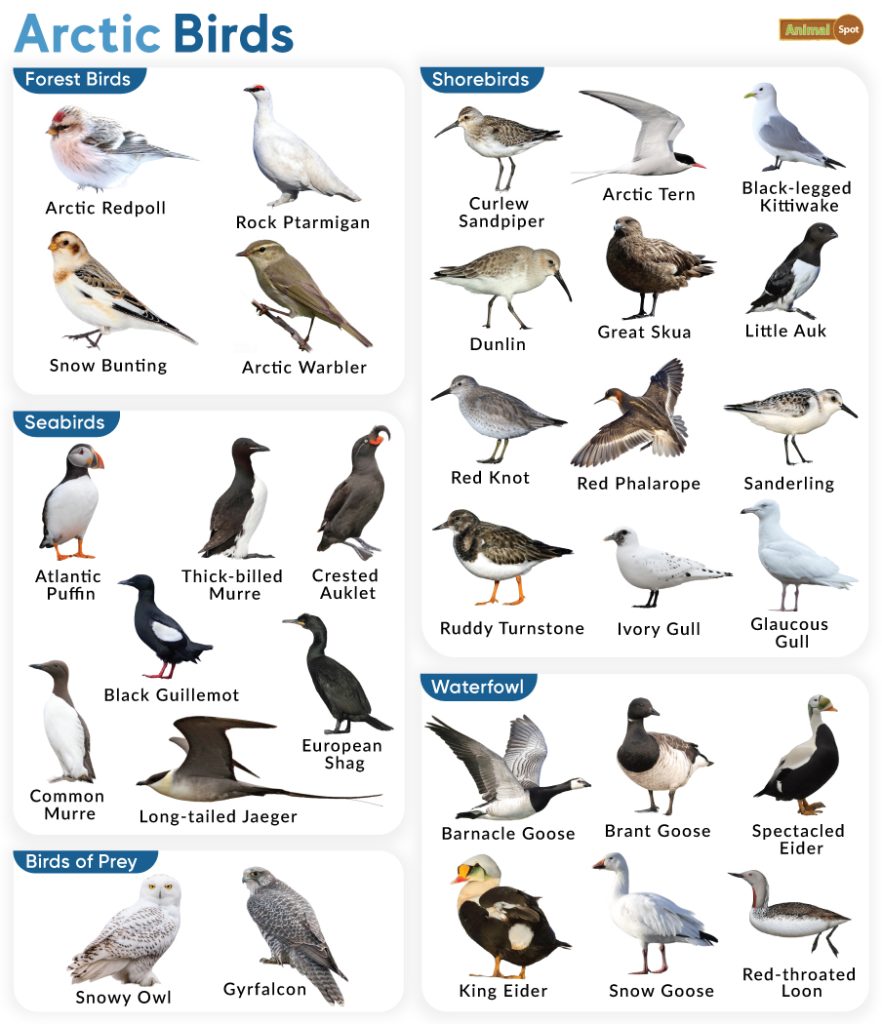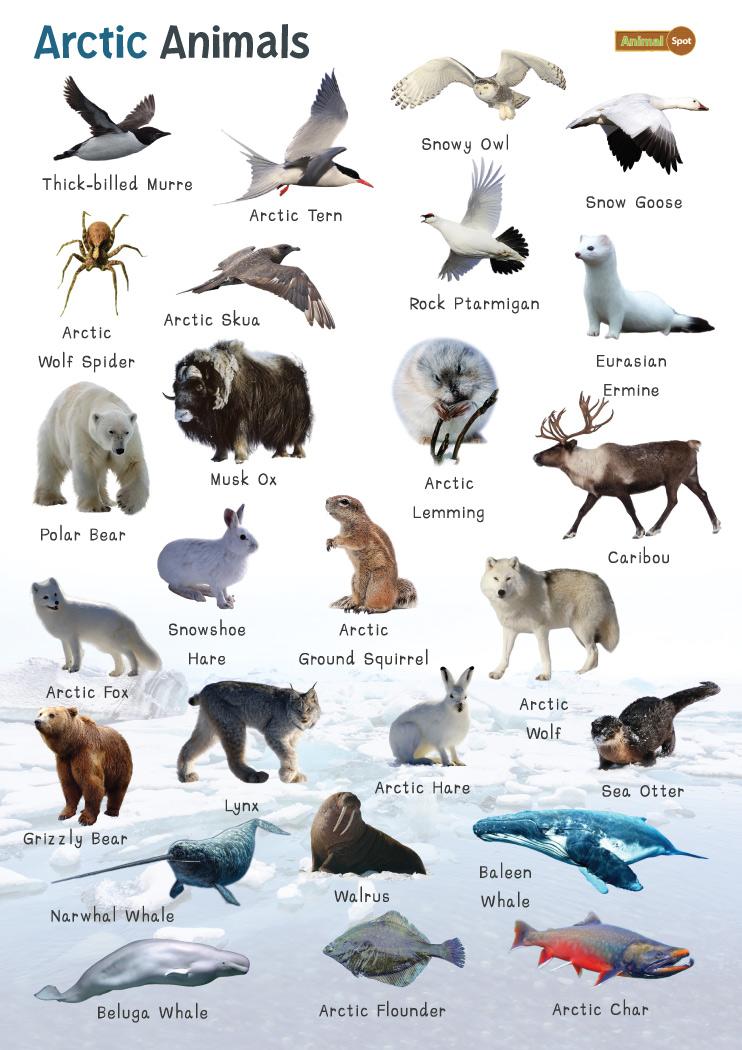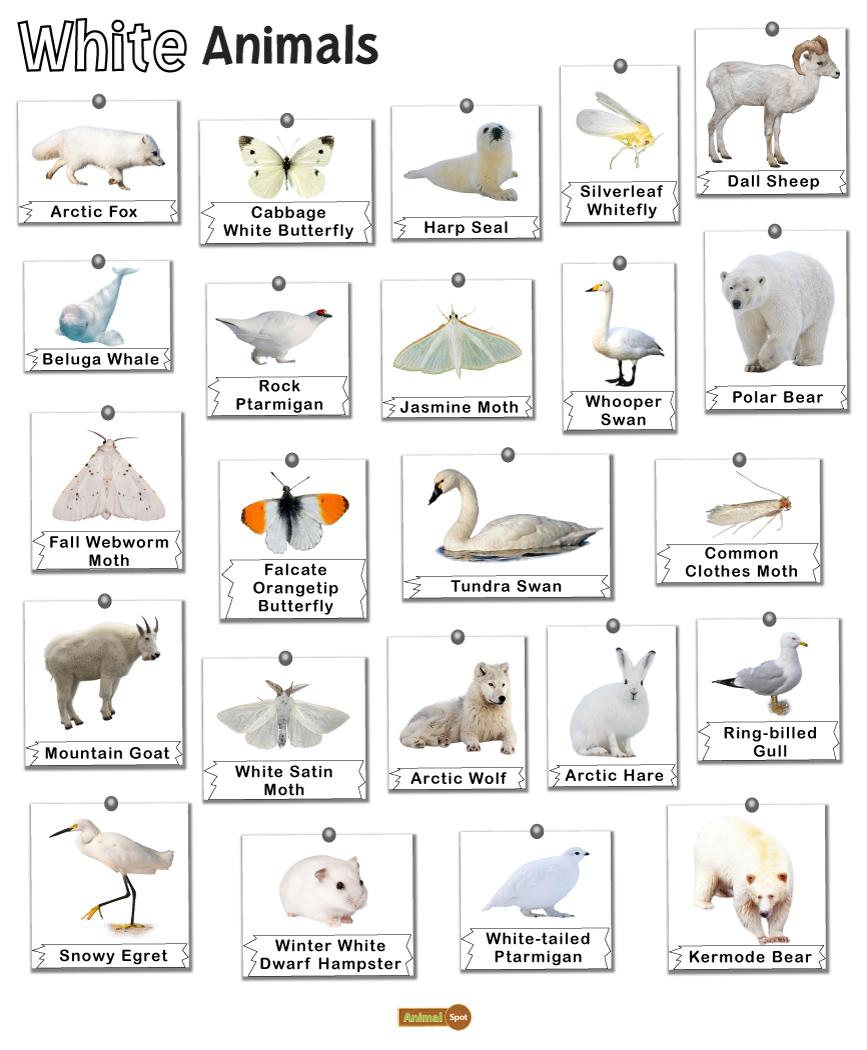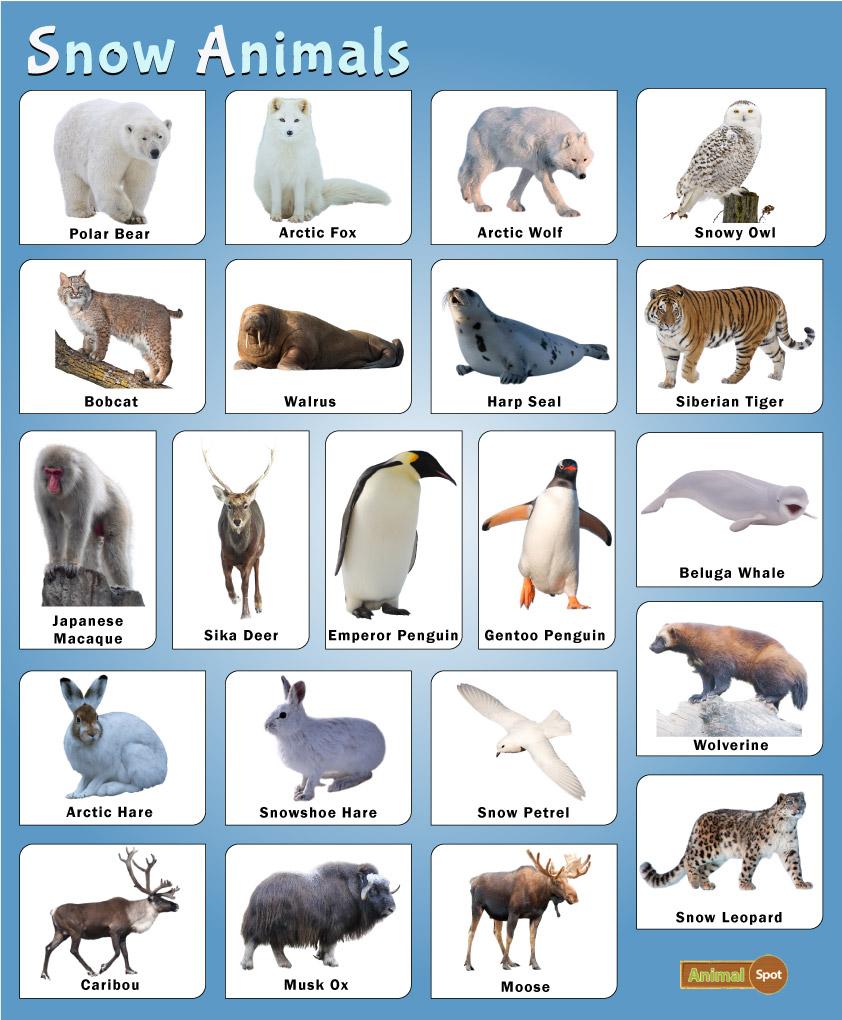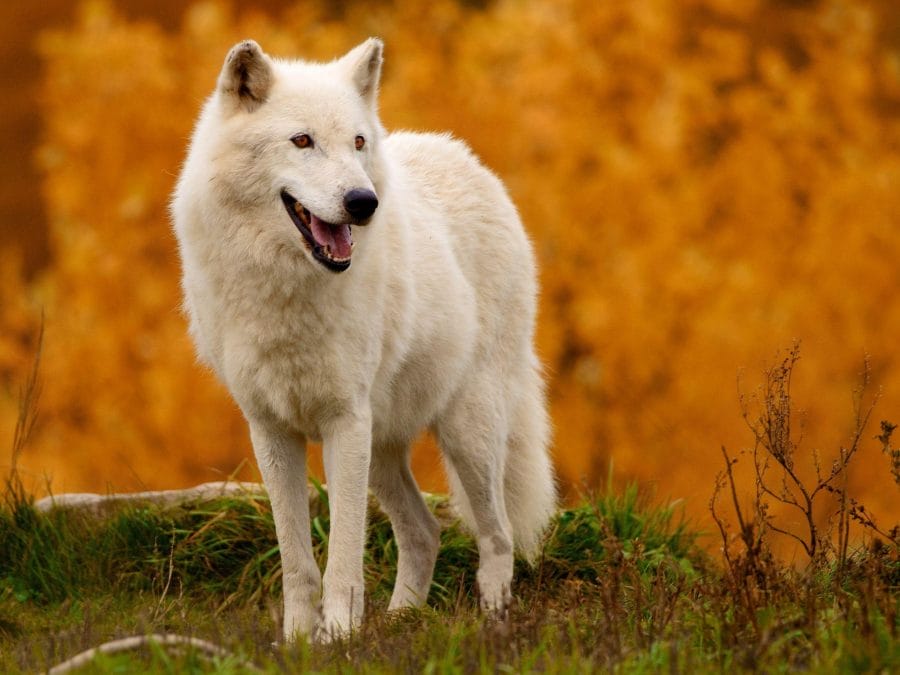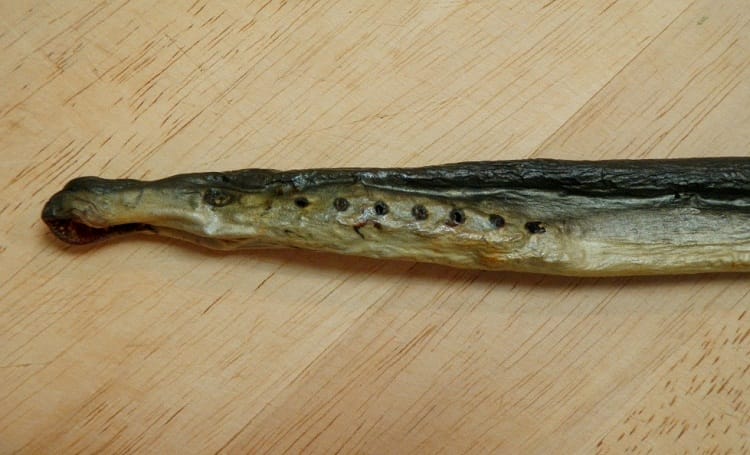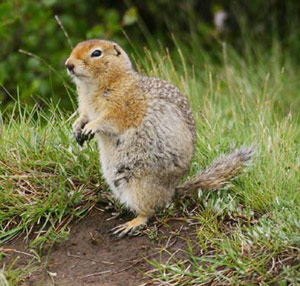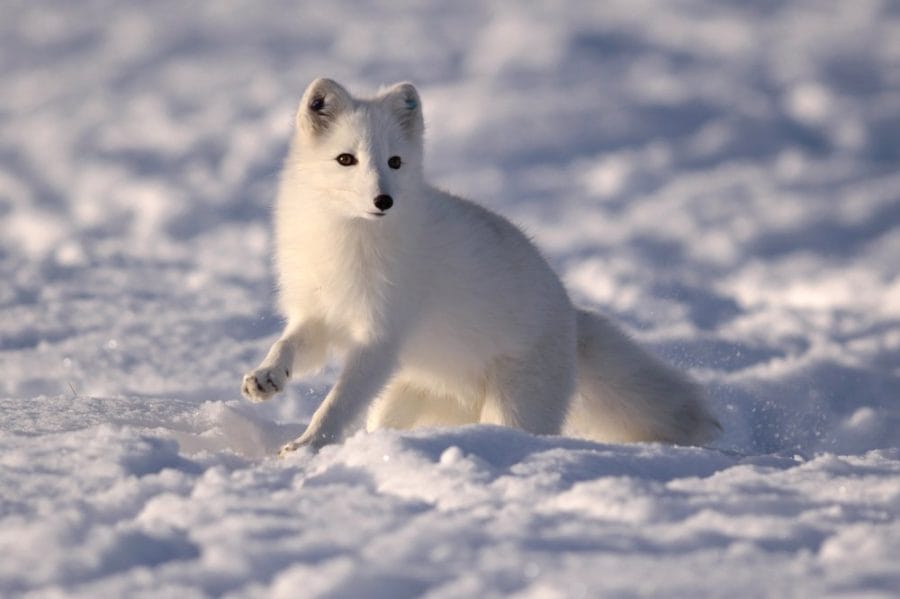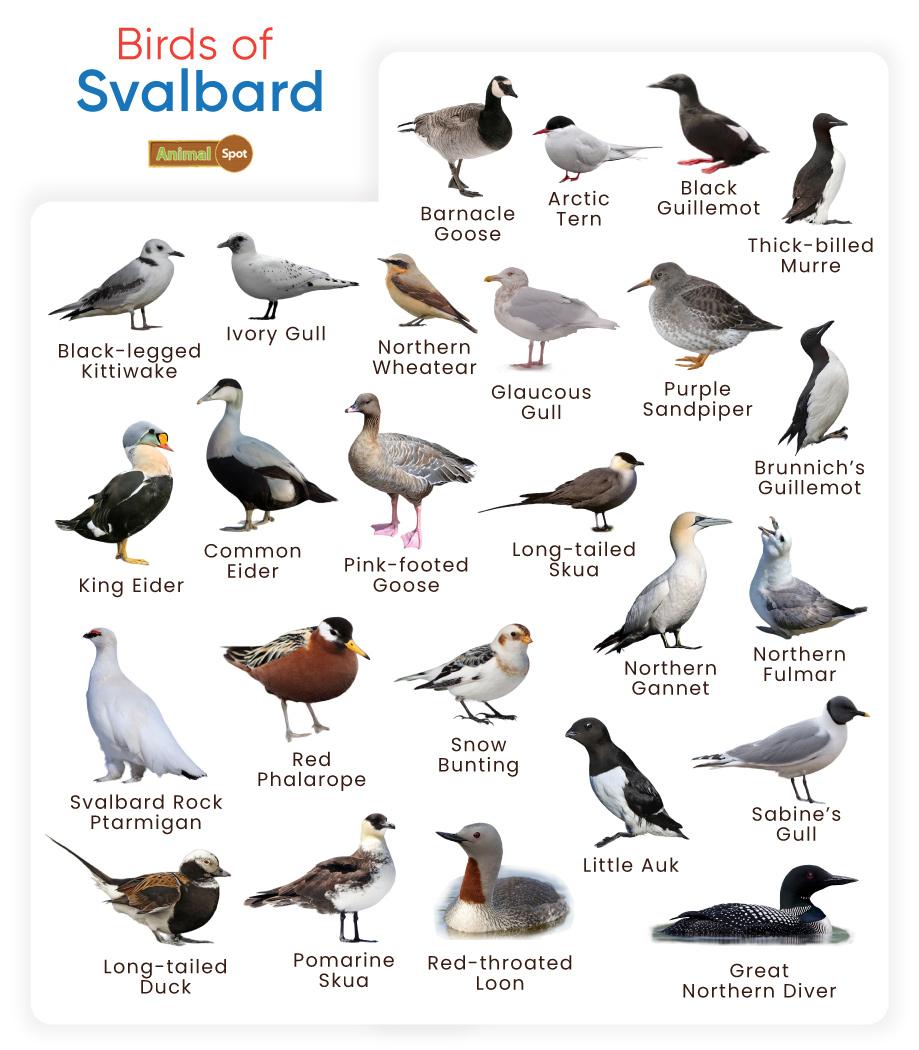The Arctic is home not just to mammals like the polar bear, orca, and Arctic fox but also to a wide variety of birds. About 200 bird species have been observed in the cold environment of the Arctic, accounting for 2% of the world’s avian diversity. However, many of these are migratory birds, visiting the region only during part of the year. These birds often form large groups, sometimes with up to 10,000 roosting in a single spot.
List of Arctic Birds
This list only mentions birds that have been observed regularly in the Arctic Circle, which indicates that they might have an established breeding population.
Birds of Prey
Forest (Tundra) Birds
- Arctic Redpoll
- Arctic Warbler
- Lapland Longspur
- Snow Bunting
- Rock Ptarmigan
- Common Raven
Seabirds
- Atlantic Puffin
- Black Guillemot
- Common Murre
- Crested Auklet
- Pomarine Jaeger
- Least Auklet
- Long-tailed Jaeger
- Northern Fulmar
- Parasitic Jaeger
- European Shag
- Thick-billed Murre
Shorebirds
- Arctic Tern
- Baird’s Sandpiper
- Black Turnstone
- Buff-breasted Sandpiper
- Curlew Sandpiper
- Dunlin
- Gray Plover
- Little Auk
- Little Stint
- Long-billed Dowitcher
- Pacific Golden Plover
- Pectoral Sandpiper
- Purple Sandpiper
- Red Knot
- Red Phalarope
- Ruddy Turnstone
- Sanderling
- White-rumped Sandpiper
- Black-legged Kittiwake
- Glaucous Gull
- Great Skua
- Heuglin’s Gull
- Iceland Gull
- Ivory Gull
- Red-legged Kittiwake
- Ross’s Gull
- Sabine’s Gull
- Thayer’s Gull
Waterfowl
Interestingly, penguins don’t live in the Arctic. Being flightless significantly restricts their mobility, which would make them vulnerable to predators such as Arctic foxes, polar bears, and wolves.
Birds of the Subarctic
There are several birds that live in places around the Arctic, known as the subarctic areas. These include:
Adaptations of Arctic Birds
- Heat Conservation — All the birds living in the Arctic have found some way to protect themselves from the extreme cold. For instance, the Rock Ptarmigan’s dense feathers enable it to bury itself in the snow without freezing, while the Atlantic Puffin’s feathers are coated with wax, repelling water and allowing it to dive repeatedly underwater for food.
- Camouflage — Arctic birds such as the Snowy Owl and Rock Ptarmigan have evolved white plumage to blend into snowy landscapes. Some birds that are more active around water, such as the Atlantic Puffin and Little Auk, use countershading for camouflage. The black plumage on their backs helps them blend with the dark ocean waters when viewed from above, while the white feathers on their fronts match the sky when seen from below.
FAQs
1. Which bird migrates from the Arctic to the Antarctic?The Arctic Tern is known for migrating south to the Antarctic during the winter and back north to the Arctic in the summer. On average, the entire round trip ranges between 44,000 to 59,000 miles, with some covering nearly 60,000 miles, making it the longest migration undertaken by any animal alive.
2. Are there any endangered birds living in the Arctic?Several Arctic species are endangered as their populations have plummeted dramatically, with some declining by as much as 90%. Waders or shorebirds, such as the Dunlin, Red Knot, and Curlew Sandpiper, are among the most affected as their Arctic breeding grounds are shrinking due to global warming.
3. Are there any flightless birds in the Arctic?While there are no flightless birds in the Arctic today, the region was once home to large, flightless birds from the genus Gastornis. These ancient birds fed on plants and seeds.

